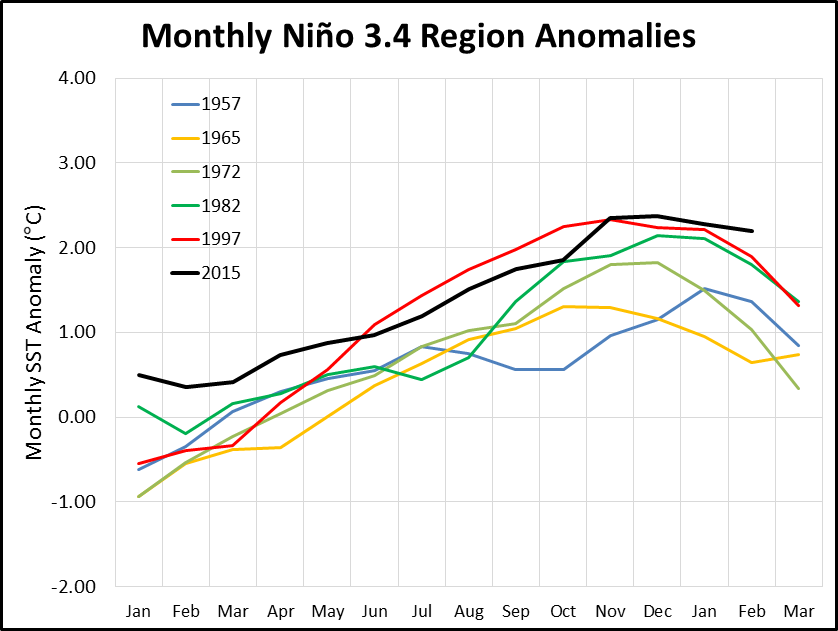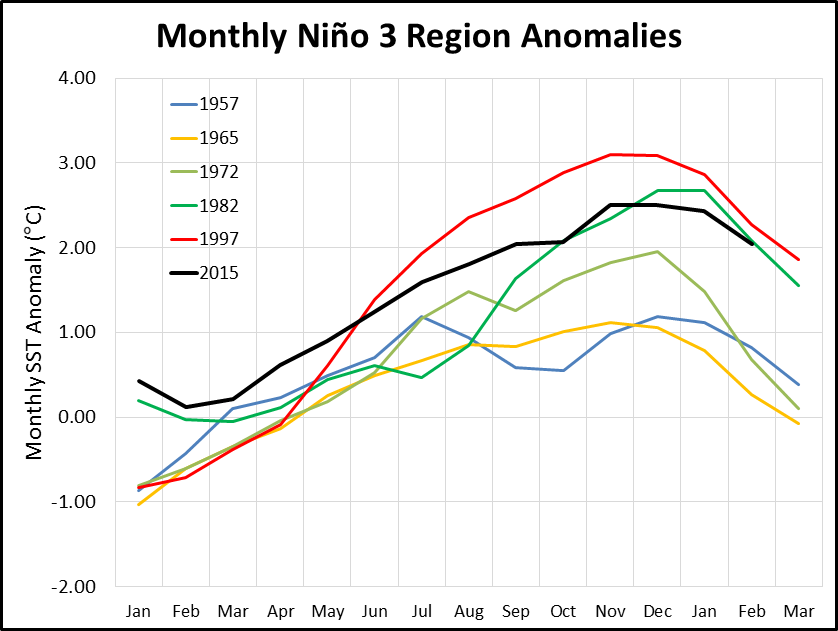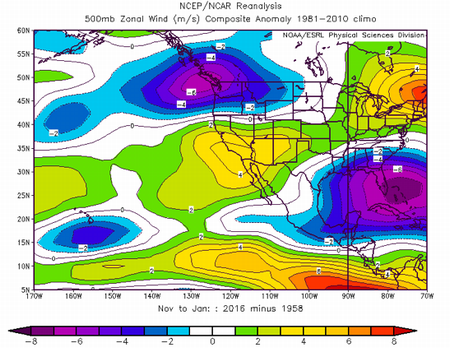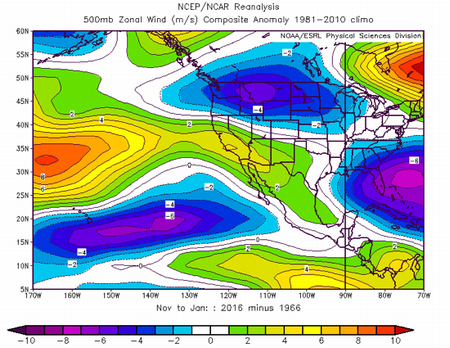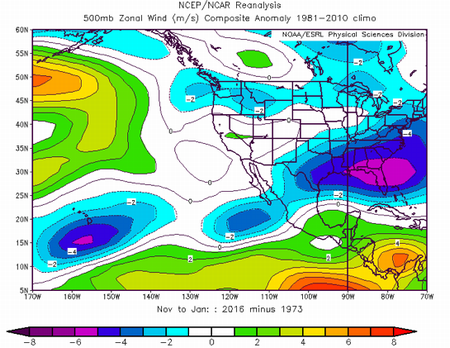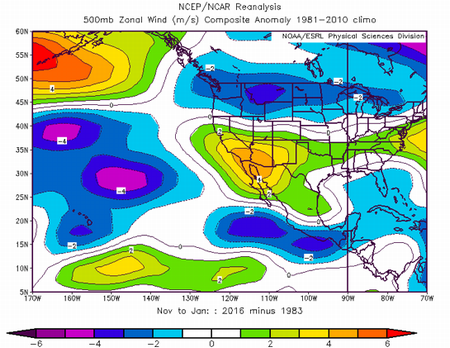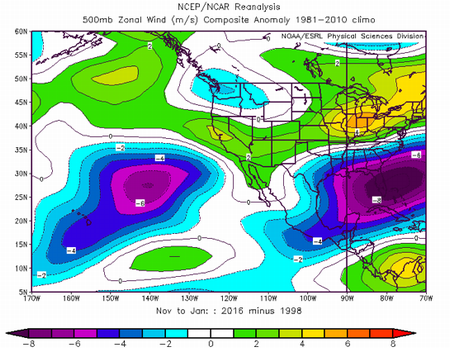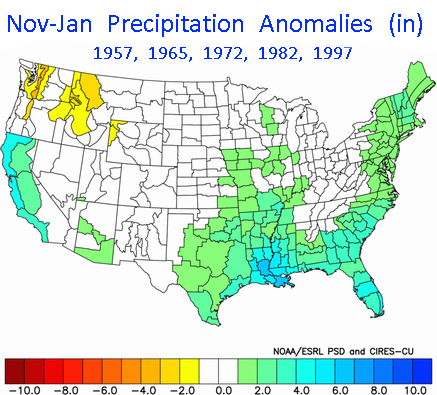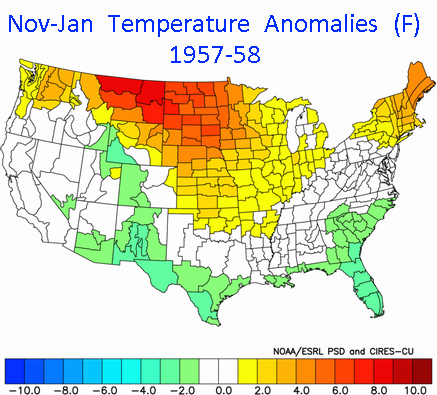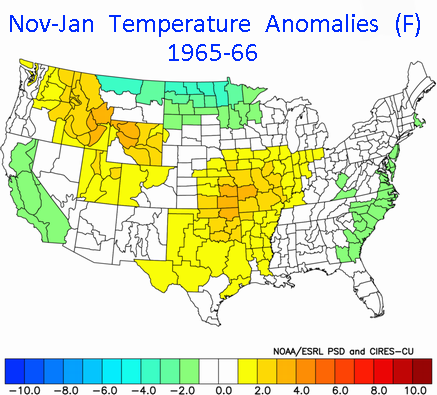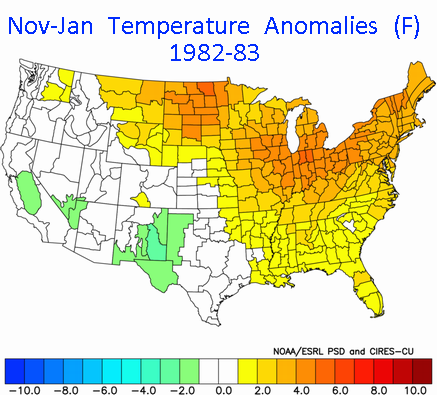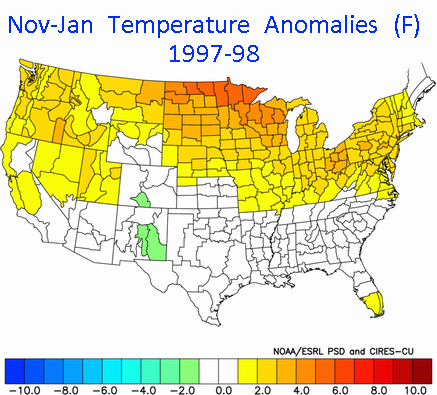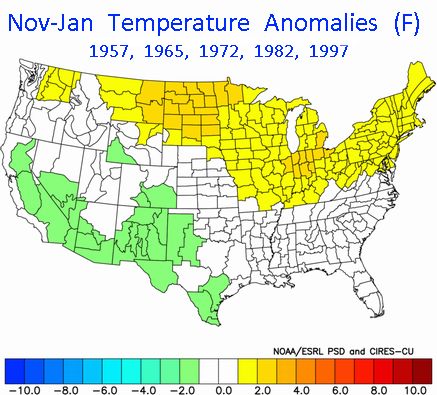and Previous Strong and Very Strong Events
by Jan Null, CCM and
John Monteverdi, CCM
March, 2016
Some of the mantras from the past year from myself, John Monteverdi and many other responsible meteorologists, have been that each El Niņo is unique, that the number of past events to compare them to is quite small, and that there are "no guarantees". (For example see Misconceptions About El Niņo)
As the current very strong El Niņo continues in the tropical Pacific, we are indeed seeing signifciant differences from past events; even those that are categorized as strong and very strong. Consequently, El Niņo 2015-16 is turning out to be the poster child for "Every El Niņo is Different"!
See also: Comparisons of Precipitation and Zonal Wind Anomalies by Monthly Groupings for 2015-2016 with those for Five Strongest El Niņo Events since 1951, by Monteverdi and Null.
|
SEA SURFACE TEMPERATURE ANOMALIES The Sea Surface Temperature Anomalies (SSTA) for the past year, when compared to previous strong and very strong events, are markedly warmer in the western Niņo regions (i.e., Niņo regions 4 and 3.4), while farther east in Regions 3 anbd 1+2 the current event is in the middle of the pack. (Map of Niņo regions).
|
|
SEA HEIGHT ANOMALIES This can also be seen in the following Sea Height Anomalies, comparing this year to 1998. Especially of note are the higher anomalies centered in the western portion of the El Niņo area of raised sea level heights with nearer to normal heights along the South Amercian coast.
|
|
ZONAL WINDS The sections above summarize the sea
surface temperature anomalies for the six strongest El Niņo
events since 1951. In this section, we examine the impact
of those anomalies on aspects of the circulation.
The documented impacts of the temperature anomalies on
the circulation include the creation of stronger than average
zonal flow, basically a subtropical branch of the westerlies, in
the lower subtropics.
A comparison of the zonal wind this year with that of each individual strong or very strong El Niņo year in the subtropical portions of the Pacific shows that the differences between the subtropical zonal flow were the greatest between those this year and those in 1997-98, followed by 1965-66; 1982-83, 1972-73 and finally, 1957-58. The zonal winds for the period November 2015 through January 2016 were most similar to those for 1957-58. 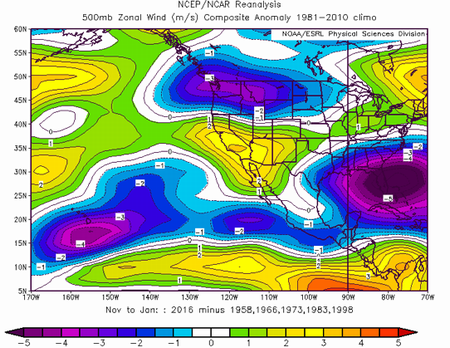
|
|
PRECIPITATION This year there have signficant differences in the precipiation patterns when compared to previous strong (i.e., Oceanic Niņo Index [ONI] between 1.5 and 2.0 for 1957-58, 1965-66, 1972-73) and very strong (ONI ≥ 2.0) El Niņos (1982-83 and 1997-98). In comparing the current event (2015-16) to the previous strong and very strong El Niņo events, there is no clear analog. The most striking difference in the Pacific Northwest where there is a very strong postivie rain anomaly. There are some consistencies in the eastern half of the United States, with the Southeast being consistently wetter than normal except fo 1965-66, but the drier than average Northeast best matches the winter of 1982-83. 
|
|
TEMPERATURE This year's temperature pattern best matches 1982-83 but are consistently warmer than even that year. 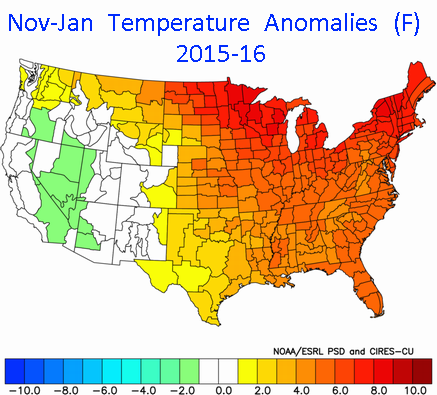
|
But what does it mean? It will take a considerable analysis to better understand why this year is different from previous strong and very strong events, but in the short term it remains a reminder that "All El Niņos are different"!
Send comments and questions to Jan Null or John Monteverdi.

